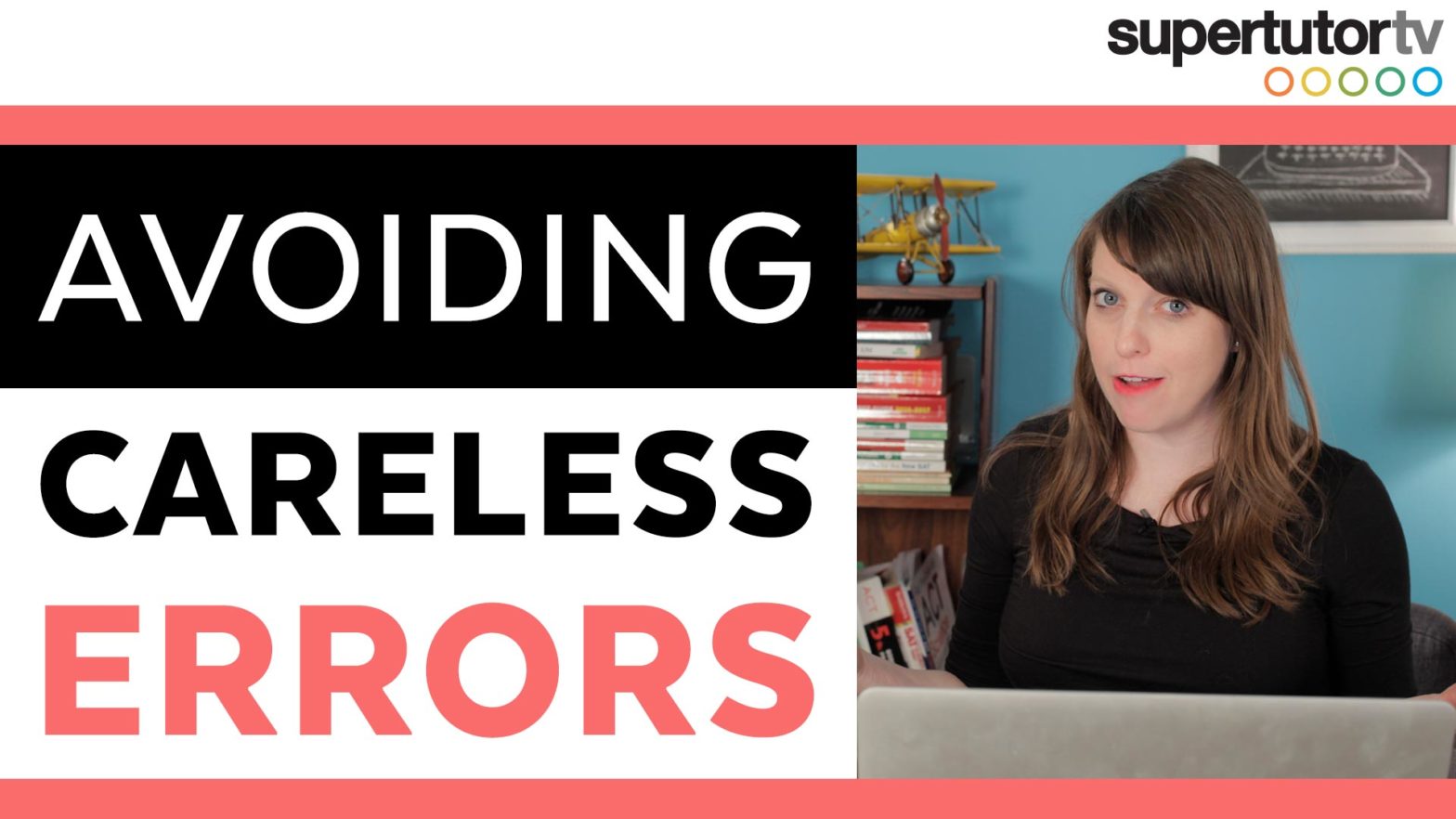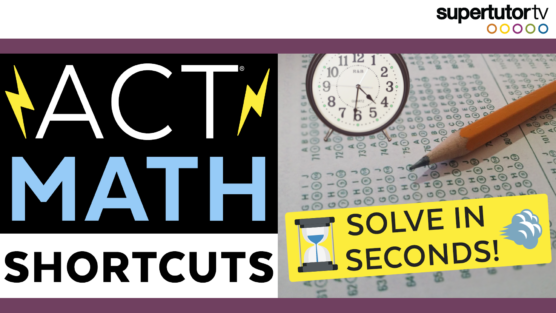Are you constantly frustrated by the fact that your grades are lower simply because you made careless errors? Looking for helpful tips to avoid careless errors on tests at school, the ACT®, the SAT® and beyond? Then read on!
Here are five tips to help you stop making careless mistakes and start catching them before it’s too late. Here, I’ll focus on multiple choice tests– but many of these principles can be applied in other situations, too!
Careless error tip #1: Be systematic
Have a strategy for approaching a problem. If you have a system then you can make sure that you’re checking yourself at every step. This way you’re focused throughout the problem and avoid missing any detail or idea.
Particularly with math word problems, it helps to circle every piece of information (numbers, units). This way you know what you’re working with and don’t forget a step. Sometimes the problems have extra information, but for the most part you should go through and check to see you’ve used every detail the problem has given you. Make sure in the end that whatever is left over was not needed and that it doesn’t change your answer.
Write your work down neatly. If you have several steps to a problem, or need to count out possibilities (in counting problems or probability problems), try to create patterns as you go through possibilities. What if you have one dime? Two dimes? Three dimes? Start with one possibility, then move to the next. Create organized ways of thinking through information and use your pencil to help you. Even in reading, logic, science or history, attempting to organize information for yourself before choosing an answer can be a helpful strategy to avoid carelessness.
With whatever system you use in approaching the problems, be sure that you stay alert and pay attention to any information given so that you don’t miss anything.
Careless error tip #2: Double check your answers
If you have the time, double check your answers. This might seem obvious, but there are two parts to this strategy.
Double check your work as you go.
Be extra cautious as you go through the test. Unless you’re 99% sure of your answers, for reading comprehension passages you should refer back to the passage to double check your instincts so that you don’t have to rely on your memory. For the math problems ask yourself what makes sense– particularly when you do word problems. If you increase the amount of flour does is makes sense that you bake fewer cookies? No! Mistakes such as this one can be easily avoided if you use a bit of common sense. Also, when solving math problems, use estimation to double check that your answers are close to what they should be. Use a calculator when you are allowed, plug numbers back into original equations or scenarios, and do whatever you can to quickly assess if what you got is right. Regardless of what section or subject you’re working on, figure out how to stay on guard as you go. Don’t trust yourself too much! You are probably more confident than you should be.
Use leftover time to review your work.
At the end of the test, if you finish before the time is up go back through and check everything over. This doesn’t mean you should go back to questions you weren’t sure about and change your answer randomly or second guess yourself. Most of the time your first “gut” answer will more likely be right unless:
- you find more evidence against it (enough to disprove your previous answer) or evidence for another answer
- you find a mistake in your work (you miscalculated or you misread something)
- you start over and go through the whole problem again (and get a different answer)
Overall, when you have time you should always be checking your answers. You have nothing to lose!
Careless error tip #3: Always consider every possibility.
Just because answer choice (A) looks good, does not mean that is the right answer. Oftentimes, test takers are simply overconfident and eager to finish. It’s easy for our “fast thinking” minds to miss a little detail or fail to see a complexity or exception. We’re all human! But if you don’t read every possible answer choice on a multiple choice test, you’re not going to have any way of catching your oversight. Even I make mistakes on tests (often)– but I’m very good at catching those mistakes.
Read through every answer. When you do this you might find another answer that also seems possible and then can analyze the differences between the answers and more deeply consider what detail you may have missed. If you stay attentive and read the question and all the answers thoroughly, you’ll often be able to save yourself from an error.
Careless error tip #4: Check every word.
Don’t just read the first couple of words of an answer choice. You don’t know what the end of the answer choice says and even a single word can make an answer wrong. You need to read the entire answer to make sure you agree with the whole thing. Likewise, you need to consider the meaning of the whole answer choice, not just notice a few words it includes that you agree with or were mentioned in the passage.
Additionally, be sure you’ve read the question and understood it correctly. If an answer is not readily apparent, checking the question again may shed light on your confusion.
Make sure that you’re thorough enough in reading these answers (and questions) that you understand what you’re answering, but obviously you need to balance carefulness with good pacing. Be careful, but don’t get bogged down.
Careless error tip #5: Use your pencil.
Don’t try to do everything in your head. You will forget things. Mental mistakes are easier to make and harder to catch.
Write down your calculations and figure things out on paper. That way you don’t accidentally drop a number or forget part of the calculation.
For reading sections, write down trends and ideas you come across so you can better remember the passage when you answer the questions. Summarize main ideas in a few words — write them down or circle them– or digest a paragraph and then write down the main points. If something is confusing, break down the ideas you do understand and take a few notes on them. Over-underlining can be a bit pointless, as can taking too many notes. Focus on large ideas and trends, and keeping pace. Use your pencil to organize thoughts but don’t let the task of note taking or highlighting slow you down. Good notes are brief, organized and effective. Great notes take little time longer to create than thinking would, but prevent you from forgetting.
When you are actively writing things down, it helps you get drawn into the information and increase your focus. The more engaged and active you are the better you are going to do on the test. The secret to using a pencil is to do so when it doesn’t slow you down too much and to be sure to not spend time rewriting or highlighting things that don’t matter. When writing down the work is just as fast as thinking it out in your head, definitely use your pencil.
For more information and updates on all things test prep sign up for our mailing list and subscribe to our YouTube channel for more helpful tips.



